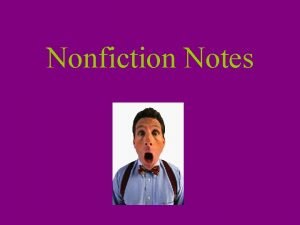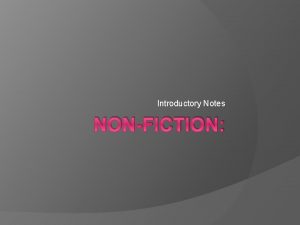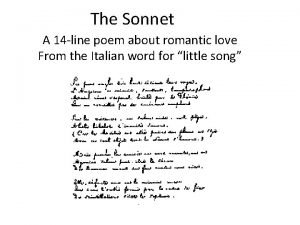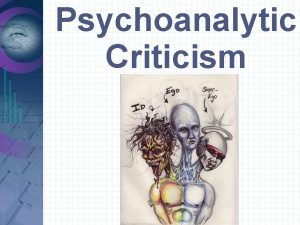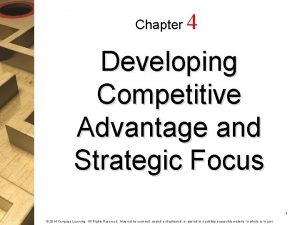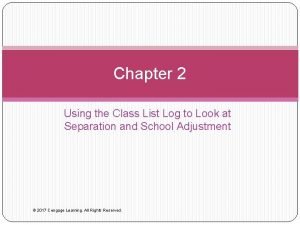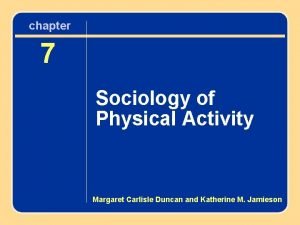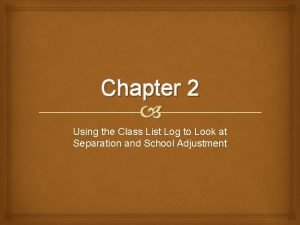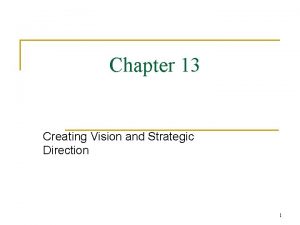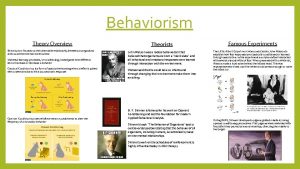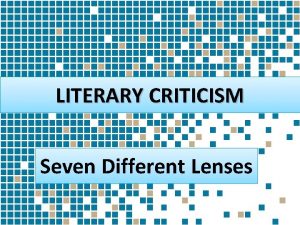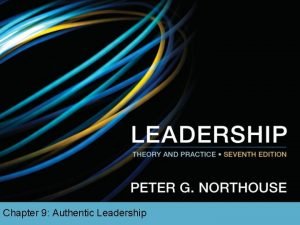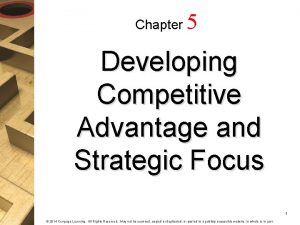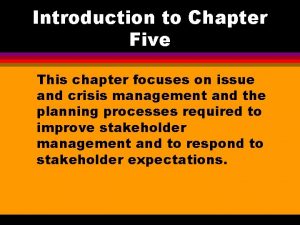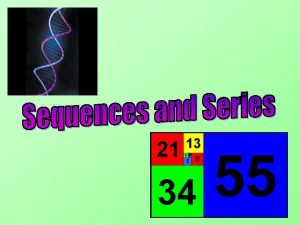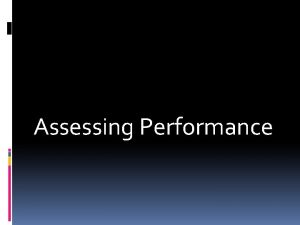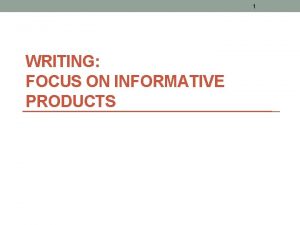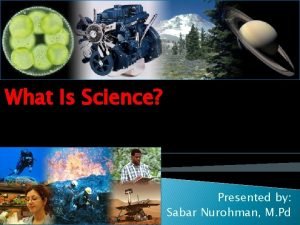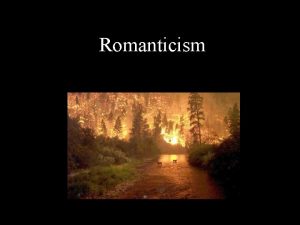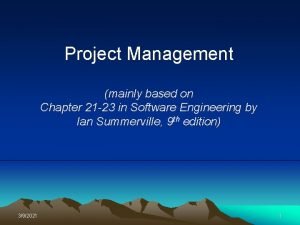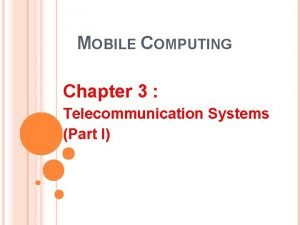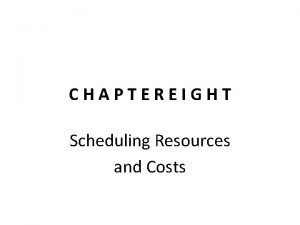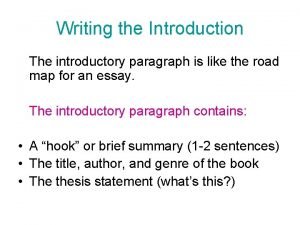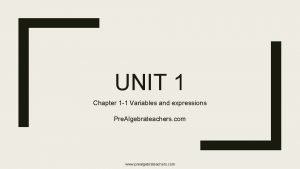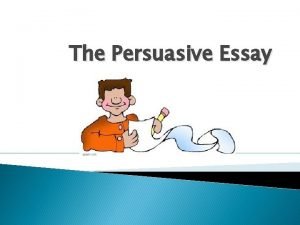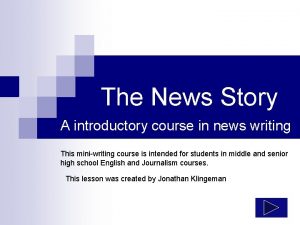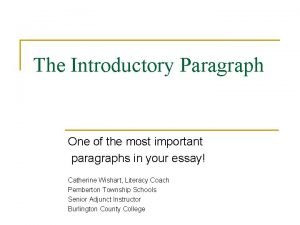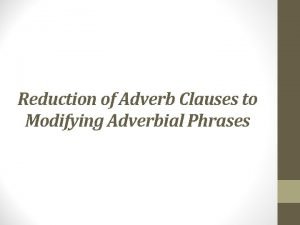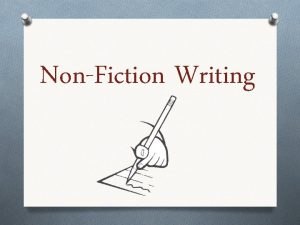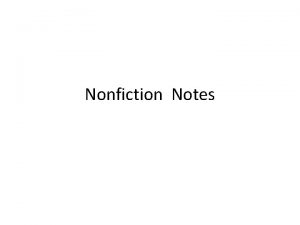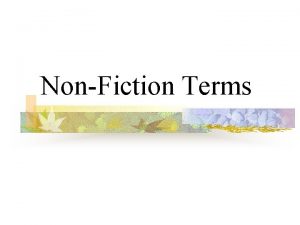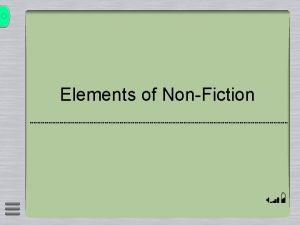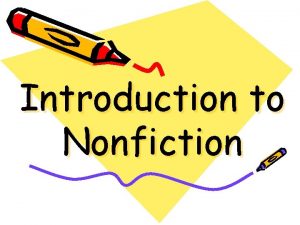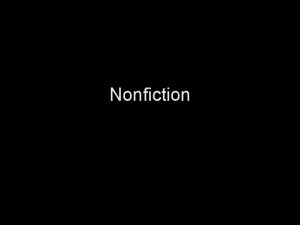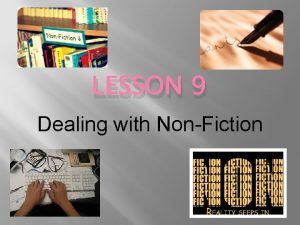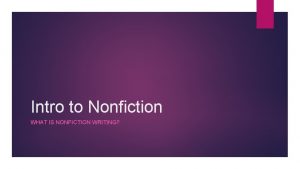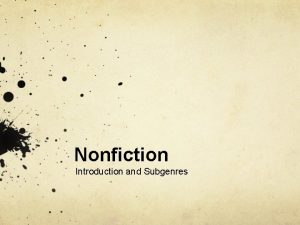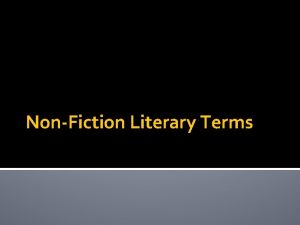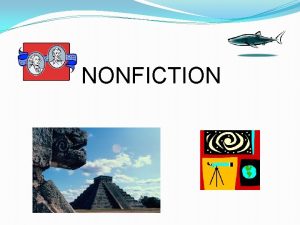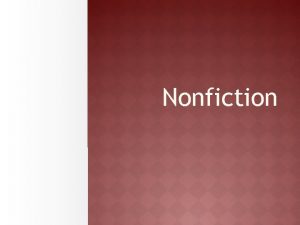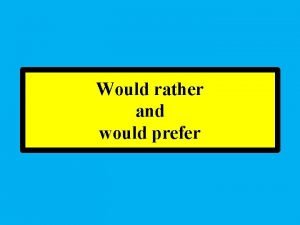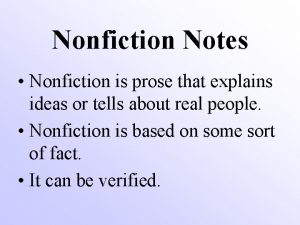Introductory Notes NONFICTION Nonfiction focuses on real rather



































- Slides: 35

Introductory Notes NON-FICTION:

Nonfiction: � focuses on real, rather than imaginary, subjects, (people, things, events, and places) facts rather than opinions � Writers know the importance of being clear. �what they write must be of interest, or no one will want to read what they have to say

Facts vs. Opinions � On average, adults watch double the amount of television that teenagers do. � Adults watch too much TV. � The first CD pressed in the U. S. was Bruce Springsteen’s Born in the USA � The best CD ever produced was Bruce Springsteen’s Born in the USA

Types of Non-Fiction � Narrative Nonfiction � Informative Nonfiction

Narrative Nonfiction � Tells a story, just as fictional (made=up) stories do. � Includes setting, character, theme, plot, conflict � May be told in chronological order or in flashback.

Informative Nonfiction � Informative Nonfiction: writing that explains a topic or promotes an opinion � Newspapers, journals, and reputable magazines and some websites are sources of informative non-fiction � Two types of informative non-fiction are �Expository �Persuasive

Types of informative nonfiction � EXPOSITORY � PERSUASIVE � Type of writing that explains, � Type of writing that is gives information, defines, or clarifies an idea � Found in news articles, in histories, in biographies, cookbooks, how-to manuals, etc. aimed at leading the reader or listern to rethink or act in a certain way � Found in newspaper editorials, in speeches, in certain types of essays, advice columns, movie review, etc.

Types of Narrative and Informative Nonfiction � Autobiography � Biography � Memoir � Diary � Essay � Speech � Informational articles

Autobiography � Autobiography: story of a person’s life written by that person �written from a 1 st person point of view and based entirely on the author’s memory �Subjective: proceeding from or taking place within an indicidual’s mind and unaffected by the outside world �Advantage: reveals the motives, emotions, and fears that only the writer can know.

Biography � Biography: story of a person’s life written by someone other than that person, uses the third person point of view � Objective: Uninfluenced by emotion or personal prejudice � Advantage: An outsider can tell us things about background, history, influences, of another person—things that the person may not have realized

Memoir � Memoir: an account of an event or period in the author’s life that usually emphasizes the author’s personal experience of a particular event or time period �Like an autobiography, a memoir is told from the first-person point of view.

Diary � A first-person, day-to-day account of a person’s life written as it is lived

Essay � Essay: short piece of nonfiction writing that usually deals with a single subject- Many essays share the author’s thoughts about a subject or experience.

Types of Essays � Narrative: a nonfiction story � In this short form, authors present a real time and place, real people as characters, and events that actually happened. � often includes a central conflict or problem, as well as a climax and resolution (plot elements) �Knowing that a literary work is a narrative essay can help you to gain historical and/or general knowledge about other people, places and events.

Types of Essays � Personal: usually informal in their language and tone �often reflect an incident in the writer’s life �The writer may share a life lesson, or reminisce about a past event. � Descriptive: uses carefully selected details to help readers picture an object or place �Writers often use sensory details in their description to help the reader understand what something looks like, sounds like, and feels like.

Types of Essays (Informational nonfiction) � Expository: when you write to inform, give directions, explain an idea, or make something clear � Persuasive: employs techniques designed to convince an audience to think or act in a certain way � examples of techniques: ○ cause or effect reasoning (appeals to logic) ○ emotion ○ ethics ○ authority � A good persuasive writer anticipates the possible concerns and objectives of the audience and uses this insight to directly address possible arguments.

Speech � Speech: speaker tries to influence the listener’s ideas or actions

Informational Article � Informational Article: Provides facts about a subject �Newspaper and magazine articles, feature stories �Textbooks, pamphlets, how-to books

Literary Elements of Nonfiction � Title: the name of a work of literature �expresses themes, highlights important details, or points to a central character or event

Literary Elements of Nonfiction � Author’s purpose: reason for writing �may be to entertain, to persuade, to express opinions, to describe or to inform

Literary Elements of Nonfiction � Characterization: how the author reveals the personality of the characters �Direct characterization: author makes direct statements about a character �Indirect characterization: author reveals a character through his or her words, thoughts, and actions and through what other characters think and say about the character �

Literary Elements of Nonfiction � Historical Narrative: work of nonfiction that tells the story of important historical events or developments � people described have motives and writers can reveal them through their words, actions, appearances and other details � includes events that are usually told in chronological order �some also include a central conflict, rising action and a resolution

Literary Elements of Nonfiction � Narrator: person or voice that tells the story � Anecdote: a brief account of an interesting or significant circumstance �Writers often use anecdotes to illustrate their points, to get a reader’s attention, to clarify ideas or to convey a story element such as setting or rising action

Literary Elements of Nonfiction � Author’s purpose: the author’s reason for writing �The purpose may be to persuade, to express an opinion, or to inform

Literary Elements of Nonfiction � Tone: an author’s attitude toward his or her subject matter �conveyed through elements such as word choice, punctuation, sentence structure, and figures of speech �can convey a variety of attitudes, such as sympathy, objectivity or humor �the specific tone is often related both to the type of writing and its purpose

Objective versus Subjective Writing � Objective= facts which can be proved to be true by the senses, the calendar, or the clock �examples: the geographic location of a city, the time of day � Subjective= details that may be true, but are verifiable only by reference to your own state of mind � examples: feelings about an event, description of a person �word connotation (associations that affect meaning)

Literary Elements of Nonfiction � Plot: sequence of events �Exposition �Rising action �Climax �Falling action � Resolution

Literary Elements of Nonfiction � Aphorism: a short, pointed statement that expresses a wise or clever observation about human experience � “To travel hopefully is better than to arrive. ”- Robert Louis Stevenson

Literary Elements of Nonfiction � Setting: the time and place in which events of a work occur �In addition to physical characteristics, setting also includes the history, customs and values of the people who live there

Literary Elements of Nonfiction � Thesis: main idea of an essay or other work of non-fiction �It is generally stated in one or two sentences �Contains a subject, and opinions, and reasons for that opinion �Indentifying thesis of a work can help you better understand the work as a whole �The thesis may be stated directly or indirectly

Literary Elements of Nonfiction � Structure: the particular order a writer uses to present ideas

Literary Elements of Nonfiction � Dialogue: a conversation between characters in a literary work �usually set off with quotation marks and dialogue tags, or markers that let the reader know who said what

Literary Elements of Nonfiction � Rhetorical devices: techniques that an author uses to create particular effects or to engage the attention of the reader �Use language in artistic ways that make passages more memorable as well as more persuasive �Parallelism �Repetition

Literary Elements of Nonfiction � Antithesis: a contrasting relationship between two ideas �An author uses antithesis by placing contrasting ideas together, often in parallel structure � Mentioning two ideas next to each other highlights their differences � Can lead the reader to certain conclusions or opinions

Literary Elements of Nonfiction � Humor: quality of a literary work that makes the characters, situations, or events seem funny or ridiculous �Recognizing the author’s use of humor can help you determine how serious a selection is, as well as if it is fictional or factual �Often used to point out human failings or ironies of every day life ○ Sarcasm ○ Exaggeration ○ Puns ○ Verbal irony
 What is nonfiction
What is nonfiction Objective facts
Objective facts 14 line sonnet poem examples about love
14 line sonnet poem examples about love Psychoanalysis focuses on
Psychoanalysis focuses on Developing competitive advantage and strategic focus
Developing competitive advantage and strategic focus Class list log observation example
Class list log observation example 4ps of management spectrum
4ps of management spectrum The false mirror
The false mirror Sociology of physical activity focuses on
Sociology of physical activity focuses on A class list log is
A class list log is Vision focuses on the current reality and maintaining it
Vision focuses on the current reality and maintaining it Behaviorism focuses on
Behaviorism focuses on Mcdp-1 defines trust as a product of
Mcdp-1 defines trust as a product of The analysis of a literary text through various lenses
The analysis of a literary text through various lenses It diverse information sharing through universal web access
It diverse information sharing through universal web access Authentic leadership focuses on
Authentic leadership focuses on Developing a firms strategy canvas focuses on
Developing a firms strategy canvas focuses on This chapter focuses on
This chapter focuses on Series and sequences
Series and sequences Highlighted synoynm
Highlighted synoynm Management focuses on
Management focuses on Example of summary of story
Example of summary of story Sabar nurohman
Sabar nurohman Romantic principles
Romantic principles Organizational restructuring
Organizational restructuring Gsm mainly focuses on voice-oriented------ services.
Gsm mainly focuses on voice-oriented------ services. Scheduling resources and costs
Scheduling resources and costs Facteur g
Facteur g Conclusion paragraph format
Conclusion paragraph format Introductory phrases examples
Introductory phrases examples Unit 1 introductory lesson 1- variables and expressions
Unit 1 introductory lesson 1- variables and expressions Keeping your hands clean and dry persuasive essay
Keeping your hands clean and dry persuasive essay Circle kicker journalism
Circle kicker journalism How to create an introduction paragraph
How to create an introduction paragraph Middle school introduction paragraph examples
Middle school introduction paragraph examples Adverb clause modifies
Adverb clause modifies
